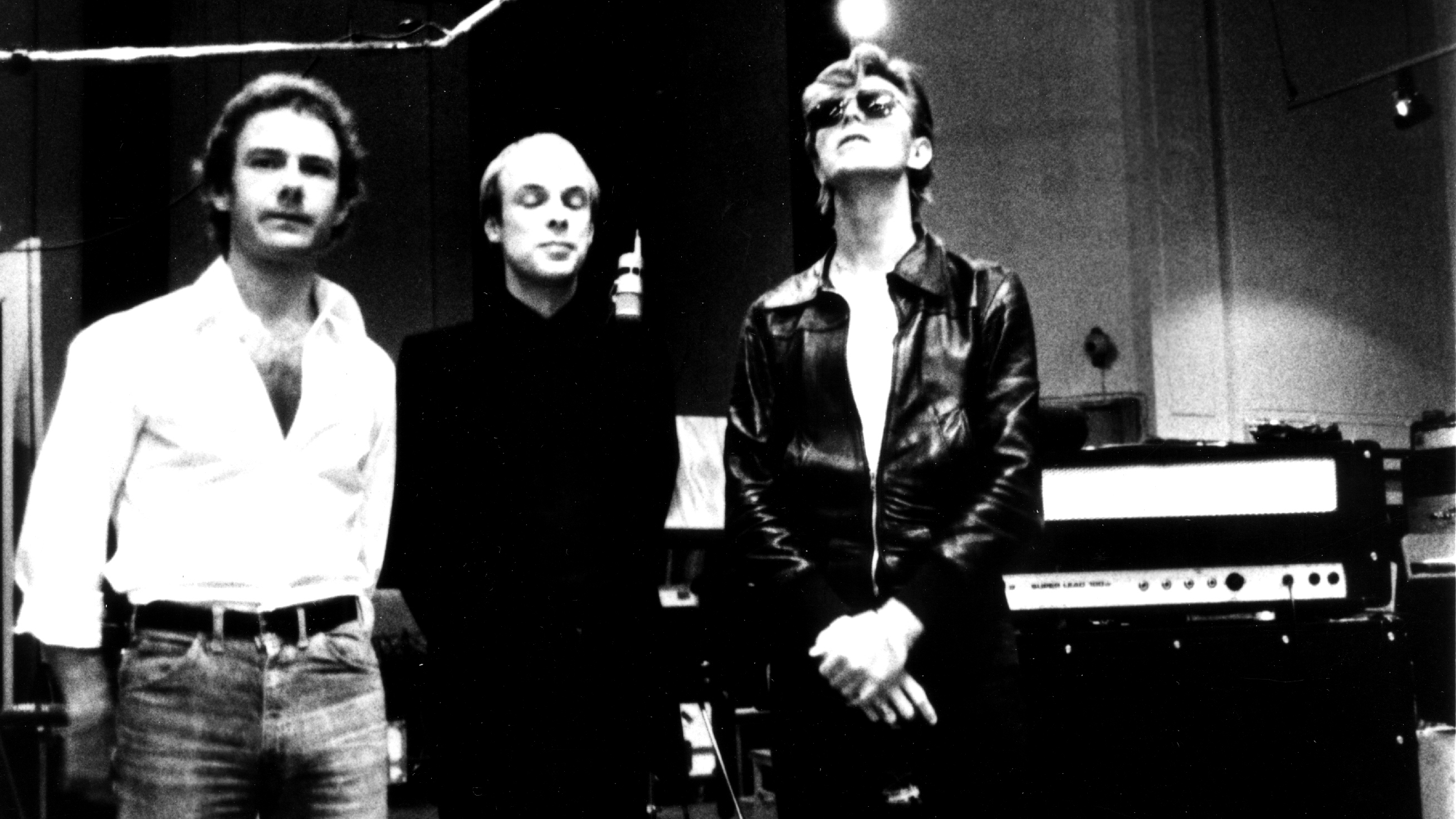“I said, ‘I just want the most modern things we can have now’”: Adrian Belew discusses his love of the Parker Fly, and how he convinced Ken Parker to create his wild signature model
The King Crimson man loved the original model, but pushed for its creators to return to its original idea as a synth guitar, resulting in a guitar he’s convinced he plays better with

As the BEAT tour kicked off last week, all eyes were understandably on Steve Vai as he deputized for Robert Fripp in the new King Crimson-adjacent outfit.
However, Adrian Belew, playing alongside Vai, his former King Crimson bandmate Tony Levin, and Tool drummer Danny Carey, has quietly caught the eye in his own way.
The guitarist, whose glittering career has included spells in Talking Heads, and with Frank Zappa and David Bowie – not to mention an accidental number-one hit with Mariah Carey – is himself an illustrious player, known for his wholly unique tone.
While he is most synonymous with playing Fender Stratocasters – when he isn’t setting fire to them – his signature Parker Fly guitar has thus far proved a vital companion during the BEAT tour. A new rig rundown with Premier Guitar has explored its origins and why he’s become so fond of the intriguing-looking six-string.
The guitar was first designed by luthier Ken Parker and Larry Fishman, today better known for his futuristic active pickups, in 1993. After some initial teething problems, he couldn’t be happier with how it plays.
“I felt like Ken Parker had taken 20 years to eliminate all the things that normally happen with electric guitars,” Belew believes. “All the problems you have, the tuning, the neck, the frets wearing out, just everything that normally can go wrong with a Fender or Gibson. He figured it all out.”
Strangely, it took Belew years of touring with his model to identify what tweaks were needed to take the guitar from great to perfect for his strange experimentations.
All the latest guitar news, interviews, lessons, reviews, deals and more, direct to your inbox!
“I called Ken Parker and I said, ‘You know, I've really been wanting to use your guitar. I love it so much, but I need a synthesizer guitar. Is there anyone [or] any way we could do something about [that]?’ I need a MIDI guitar, is what I said.
“He said, ‘Well, that's funny, because when we first brought it out, it was supposed to be a MIDI guitar. It was built to be that.’”
Despite its launch as a product a step away from the original template, it won over some notable players including Grand Funk Railroad’s Mark Farner, thanks to its light weight and versatile piezo pickups.
It took Parker and Fishman four years to bring the Fly to fruition, so there was a little reluctance from them when Belew asked them to revive their plans for MIDI integration. Eventually, he got his way.
“I said, ‘I just want the most modern things we can have now.’ So I was only changing the sound parts, not the guitar,” Belew continues.
Belew got his signature model 13 years ago, and adorned it with a fair raft of gizmos. Its whammy-stocked tremolo could be pushed and pulled, with the synth and guitar lovechild bestowed with a 13-pin out for MIDI/synth connectivity, and Line 6 Variax components.
This includes a 25-point knob on the body of the guitar for delivering 25 types of guitar sounds, ranging from 12-strings and acoustics to a sitar or a Telecaster. Gadgets have always proved to be inspiring for the guitarist.
“I love technology,” he tells Premier Guitar. "It always excites me to find something I could never do before and inspires me to write new music. Right back when I first started making animal noises and I made a rhinoceros-snorting sort of sound, I thought, ‘You've got to have a song to put that in, otherwise it's just a goofy gimmick.’”
That would become the premise for his 1982 solo album, Lone Rhino, and he'd continue that experimentalism with his Parker Fly some years later.
The signature guitar also featured three pickups: DiMarzio and Sustainiac humbuckers, and a Fishman piezo.
The result is a guitar that perfectly matches Belew’s needs and playing style.
“I swear this guitar never goes out of tune,” he says. “[It] plays beautifully. I play better with the [signature] Parker Fly. I can't explain it better than that.”
The 65-date BEAT tour started on September 12, with the band performing a 19-song set of King Crimson’s best ‘80s material – and one song from its ‘70s canon.
A freelance writer with a penchant for music that gets weird, Phil is a regular contributor to Prog, Guitar World, and Total Guitar magazines and is especially keen on shining a light on unknown artists. Outside of the journalism realm, you can find him writing angular riffs in progressive metal band, Prognosis, in which he slings an 8-string Strandberg Boden Original, churning that low string through a variety of tunings. He's also a published author and is currently penning his debut novel which chucks fantasy, mythology and humanity into a great big melting pot.



